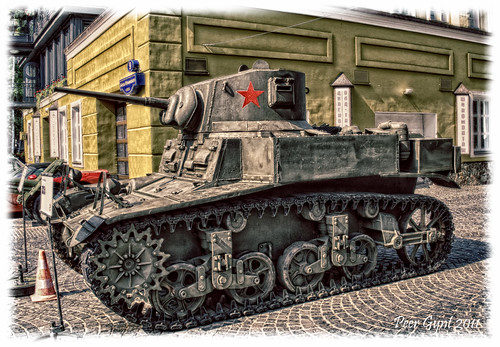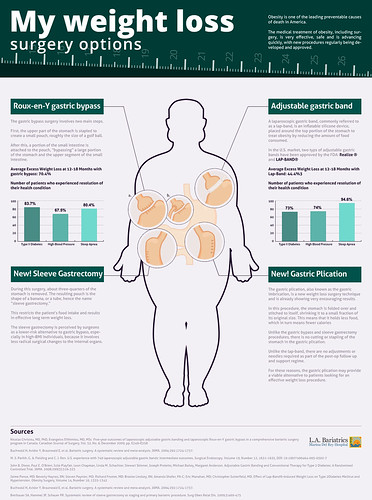Check out these la weight loss images:
M3A1 (Stuart) Light Tank. 1941. Легкий танк M3А1 “Стюарт”.

Image by Peer.Gynt
Technical Museum of Vadim Zadorozhny. Moscow.
Музей Техники Вадима Задорожного. Москва.
The M3 Stuart, formally Light Tank M3 was an American light tank of World War II. It was used by British and Commonwealth forces prior to the entry of the USA into the war, and thereafter by US and Allied forces until the end of the war. The name General Stuart or Stuart given by the British comes from the American Civil War General J.E.B. Stuart and was used for both the M3 and M5 Light Tank; in British service it also had the unofficial nickname of Honey. To the United States Army the tanks were officially known only as Light Tank M3 and Light Tank M5.
History
Observing events in Europe, American tank designers realized that the Light Tank M2 was becoming obsolete and set about improving it. The upgraded design, with thicker armor, modified suspension and new gun recoil system was called "Light Tank M3". Production of the vehicle started in March 1941 and continued until October 1943. Like its direct predecessor, the M2A4, the M3 was armed with a 37 mm M5 gun and 5 .30-06 Browning M1919A4 machine guns: coaxial with the gun, on top of the turret in an M20 AA mount, in a ball mount in right bow, in the right and left hull sponsons.
To relieve the demand for the radial aero-engines used in the M3, a new version was developed using twin Cadillac V-8 automobile engines. The new model (initially called M4 but redesignated M5 to avoid confusion with the M4 Sherman) also featured a redesigned hull with sloped glacis plate and driver’s hatches moved to the top. Although the main criticism from the using units was that the Stuarts lacked firepower, the improved M5 series kept the same 37 mm gun. The M5 gradually replaced the M3 in production from 1942 and was in turn succeeded by the Light Tank M24 in 1944.
Combat history
Light Tank M5A1 passes through the wrecked streets of Coutances.
An Australian Stuart I during the final assault on Buna.
A British M3 (Stuart I) knocked out during fighting in North Africa.The British Army was the first to use the Light Tank M3 as the "General Stuart" in combat. In November 1941, some 170 Stuarts took part in Operation Crusader, with poor results. Although the high losses suffered by Stuart-equipped units during the operation had more to do with better tactics and training of the Afrika Korps than the apparent superiority of German armor in the North African campaign, the operation revealed that the M3 had several technical faults. Mentioned in the British complaints were the 37 mm M5 gun and poor internal layout. The two-man turret crew was a significant weakness, and some British units tried to fight with three-man turret crews. The Stuart also had a limited range, which was a severe problem in desert warfare as units often outpaced their supplies and were stranded when they ran out of fuel. On the positive side, crews liked its high speed and mechanical reliability, hence its unofficial nickname of Honey. The high speed and high reliability distinguished the Stuart from cruiser tanks of the period, in particular the Crusader, which composed a large portion of the British tank force in Africa up until 1942.
From the summer of 1942, when enough US medium tanks had been received, the British usually kept Stuarts out of tank-to-tank combat, using them primarily for reconnaissance. The turret was removed from some examples to save weight and improve speed and range. These became known as "Stuart Recce". Some others were converted to armored personnel carriers and were known as "Stuart Kangaroo", and some were converted command vehicles and known as "Stuart Command". M3s, M3A3s, and M5s continued in British service until the end of the war, but British armor units had a smaller proportion of these light tanks than US units.
The other major Lend-Lease recipient of the M3, the Soviet Union, was even less happy with the tank, considering it undergunned, underarmored, likely to catch fire, and too sensitive to fuel quality. The narrow tracks were highly unsuited to operation in winter conditions, as they resulted in high ground pressures that sank the tank into the snow. Also, the M3’s radial aircraft engine required high-octane fuel, which complicated Soviet logistics as most of their tanks utilized diesel. However, the M3 was superior to early-war Soviet light tanks such as the T-60, which were often underpowered and possessed even lighter armament than the Stuart. In 1943, the Red Army tried out the M5 and decided that the upgraded design wasn’t much better than the M3. Being less desperate than in 1941, the Soviets turned down an American offer to supply the M5. M3s continued in Red Army service at least until 1944.
In US Army service, the M3 first saw combat in the Philippines. Two battalions, comprising the Provisional Tank Group fought in the Bataan peninsula campaign. When the American army joined the North African Campaign in late 1942, Stuart units still formed a large part of its armor strength. After the disastrous Battle of the Kasserine Pass the US quickly followed the British in disbanding most of their light tank battalions and subordinating the Stuarts to medium tank battalions performing the traditional cavalry missions of scouting and screening. For the rest of the war, most US tank battalions had three companies of M4 Shermans and one company of M3s or M5/M5A1s.
In the European theater, Allied light tanks had to be given cavalry and infantry fire support roles since their main cannon armament could not compete with heavier enemy AFVs. However, the Stuart was still effective in combat in the Pacific Theater, as Japanese tanks were both relatively rare and were generally much weaker than even Allied light tanks. Japanese infantrymen were poorly equipped with anti-tank weapons and tended to attack tanks using close-assault tactics. In this environment, the Stuart was only moderately more vulnerable than medium tanks. In addition, the poor terrain and roads common to the theatre were unsuitable for the much heavier M4 medium tanks, and so initially, only light armor could be deployed. Heavier M4s were eventually brought to overcome heavily entrenched positions, though the Stuart continued to serve in a combat capacity until the end of the war.
Though the Stuart was to be completely replaced by the newer M24 Chaffee, the number of M3s/M5s produced was so great (over 25,000 including the 75 mm HMC M8) that the tank remained in service until the end of the war and well after. In addition to the United States, United Kingdom and Soviet Union, who were the primary users, it was also used by France, China (M3A3s and, immediately post-war, M5A1s) and Tito’s partisans in Yugoslavia (M3A3s and few M3A1).
After the war, some countries chose to equip their armies with cheap and reliable Stuarts. The Republic of China Army, having suffered great attrition in terms of armors as a result of the ensuing civil war, rebuilt their armored forces by acquiring surplus vehicles left behind in the former PTO by the US forces, including 22 M5A1s to equip two tank companies. They would have their finest hours during the Battle of Kuningtou, for which the tank came to be known as the "Bear of Kinmen" (金門之熊). The M5 played a significant role in the First Kashmir War (1947) between India and Pakistan, including the battle of Zoji-la pass at an incredible altitude of nearly 12,000 ft. The vehicle remained in service in several South American countries at least until 1996.
During the 60s and 70s, the Portuguese Army also used some in the war in Angola, where its all terrain capability (compared to wheeled vehicles) was greatly appreciated.
Production history
Produced 1941-1943
Specifications
Weight 14.7 tonnes (32,400 lb)
Length 4.5 m (14.8 ft)
Height 2.3 m (7.5 ft)
Crew 4 (Commander, gunner, driver, co-driver)
——————————————————————————–
Armor 13 – 51 mm
Primary
armament 37 mm M6 in M44 mount
174 rounds
Secondary
armament 3 x .30-06 Browning M1919A4 MG
7,500 rounds
Engine Continental W-670-9A, 7 Cylinder air-cooled radial
250 hp (186 kW)
Power/weight 17.82 hp/tonne
Suspension Vertical volute spring
Operational
range 120 km (74 mi)
Speed 58 km/h (36 mph) (road)
30 km/h (18 mph) (off-road)
From Wikipedia, the free encyclopedia
en.wikipedia.org/wiki/M3_Stuart
My-Weight-Loss-Surgery-Options-LA-Bariatrics

Image by Chris Morris CA
The most popular surgical weight loss options presented visually in an infographic released by L.A. Bariatrics
Original source: www.marinaweightloss.com/weight-loss/
Shared under CC Attribution license.